Toyota MIRAI 2 2021MY (EU)

| Specification | |
|---|---|
| Fuel Cell Type | Polymer electrolyte |
| Number of cells | 330 |
| Max output (kW/DIN hp) | 128/174 |
| Power density (kW/l) | 5.4 |
| Fuel tank capacity (kg) | 5.6 |
| Volume (litre) | 142.2 |
| HV Battery Type | Lithium-ion |
| Nominal voltage (V) | 310.8 |
| E-Motor Type | PMSM |
| Max. power (kW/DIN hp) | 134/182 |
| Max. torque (Nm) | 300 |
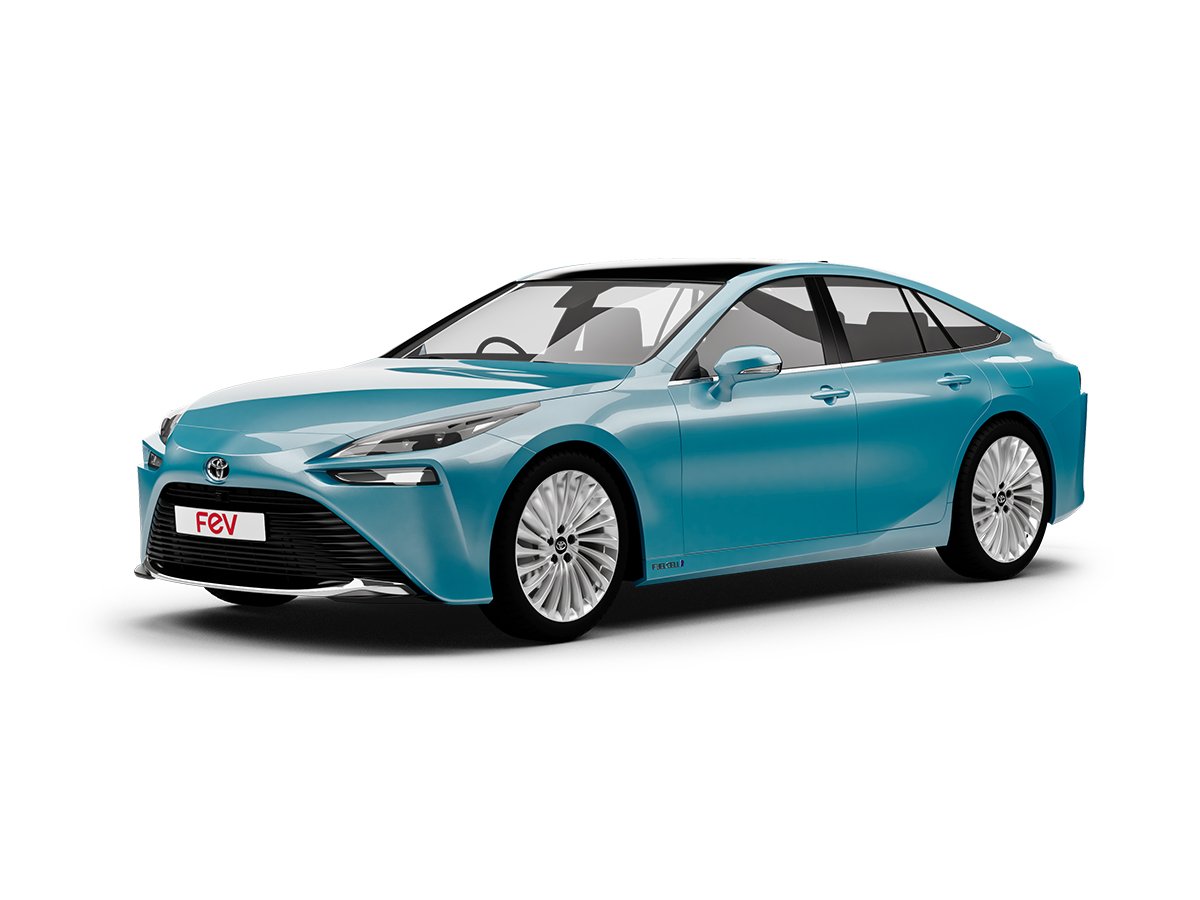
Key Features
- The MIRAI 2 is developed based on Toyota's modular GA-L platform.
- The new platform allows the addition of a third hydrogen fuel tank, extending the driving range by 30% to approximately 650 km.
- The fuel cell system has been completely redesigned, significantly reducing the size and weight of key components.
- By mounting a fully redesigned fuel cell electric powertrain on the GA-L vehicle platform, the MIRAI 2 achieves an ideal 50:50 chassis balance.
Fuel Cell System Integration
- Main components of the MIRAI 2 fuel cell system are installed at front compartment of the vehicle above the front axle.
- The fuel cell stack and the FC boost DC/DC converter are stacked on top of each other
- The FC boost converter contains:
- DC/DC converter to boost FC voltage to 650V
- Other power electronics components like inverter stages of e.g. coolant pumps
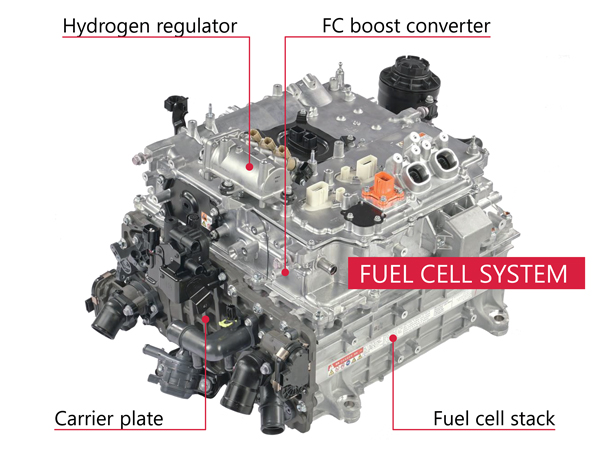
Power Unit
- Different power electronics functions are integrated within one power unit in a highly integrated approach.
- DC/DC converter HV to 12 V board net
- DC/DC converter for HV battery
- Inverter traction motor
- Inverter fuel cell air compressor
- Denso power card modules enable double-sided cooling for semiconductors.
- The multipiece housing consists of cast and sheet metal components.
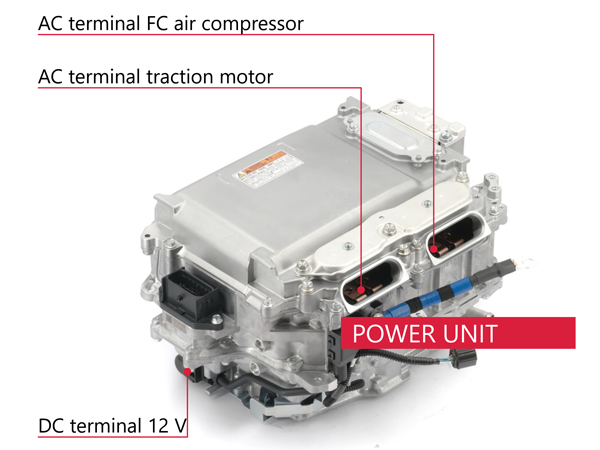
Electric Drive Unit (EDU)
- MIRAI 2 is driven by an electric motor at the rear axle with maximum power of 134 kW.
- The electric drive unit (EDU) including electric motor and 1-speed gearbox is cooled using a separate oil circuit consisting of:
- Electrical oil pump mounted to the EDU
- Two oil coolers mounted behind rear wheel housings using air as cooling medium
- Lubrication of gearbox is realized with internal mechanical oil pump.
- Park lock system is integrated into gearbox.
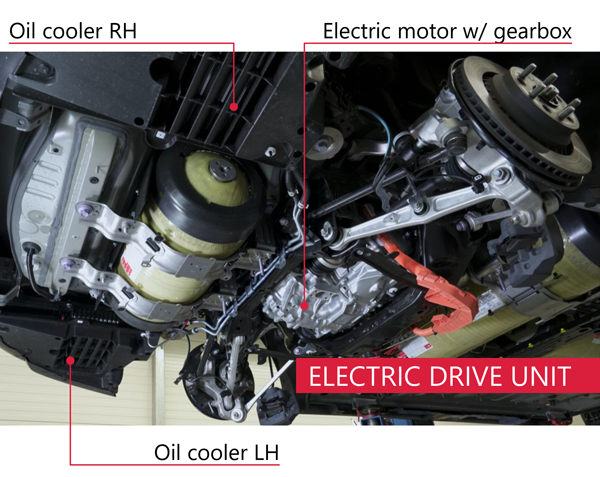
Fuel cell
- Proton-exchange membrane fuel cell is used for MIRAI 2.
- Different media are supplied through cutouts.
- 330 cells are connected in series, which is 40 cells less compared to MIRAI 1.
- One fuel cell consists of different subcomponents.
- Semi-bipolar plates (Cathode + Anode side)
- Rubber gasket between cells
- Subgasket between bipolar plates
- Gas diffusion layer + Microporous layer
- Membrane electrode assembly
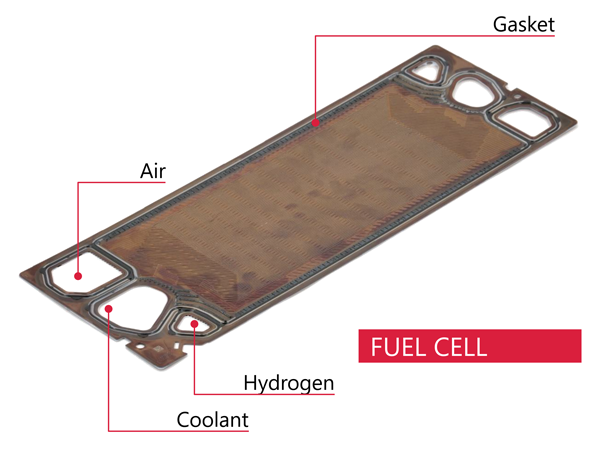
Benchmarking Report Overview
The following reports are available:
- M1.1 – Level-1 Benchmark
Level-1 benchmark delivers a first vehicle overview and comparison of key performance indicators within FEV scatter bands. - M2 - Operations & Consumption
Detailed investigation of the Hybrid operation strategy & Energy management - M3 – Fuel Cell System Evaluation
Comprehensive insights into system performance, efficiency and fuel cell operation strategy - M4 – Fuel Cell System Teardown, Design & Cost BMK
- M5 - Electric Powertrain Component Teardown, Design & Cost BMK
- M6 - Acoustics & NVH
- M7 - Powertrain Thermal Management
- M8 - Compressor Analysis & Mapping
Compressor benchmarking of aerodynamics, acoustics and electronics - M9 - Fuel Cell Stack Investigation
Fuel Cell stack mapping and efficiency investigations
For further details including content and price, please contact:
MarkLines Co., Ltd., Consulting Services Department
Person in charge: Mr. Usuba
TEL:(03) 4241-3906
FAX:(03) 4241-3900
e-mail:benchmarkdata@marklines.com

 AI Navigator
AI Navigator




 Japan
Japan USA
USA Mexico
Mexico Germany
Germany China (Shanghai)
China (Shanghai) Thailand
Thailand India
India